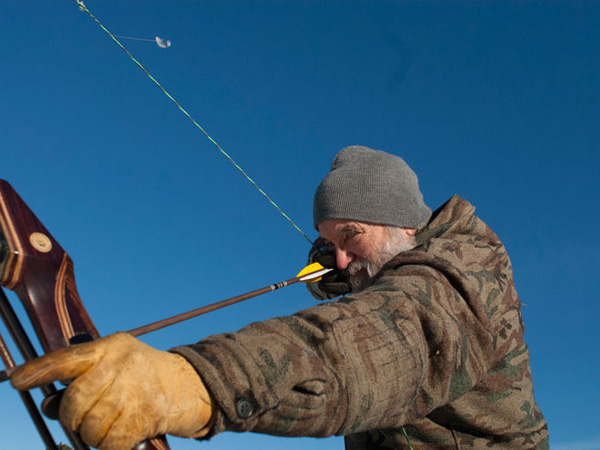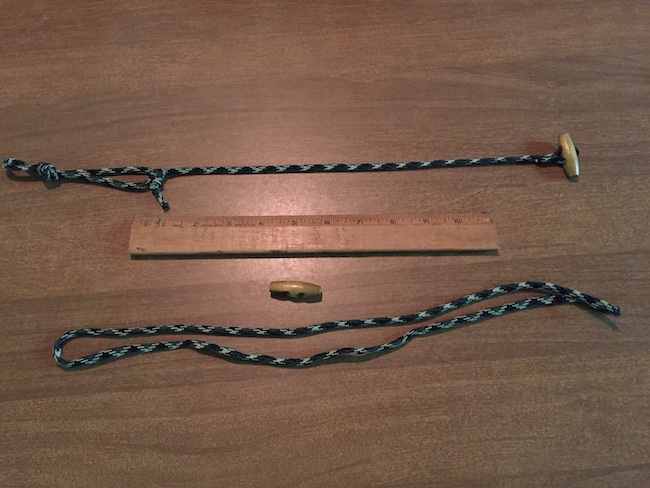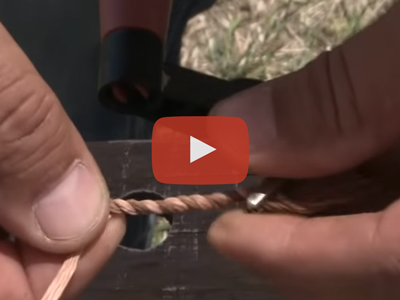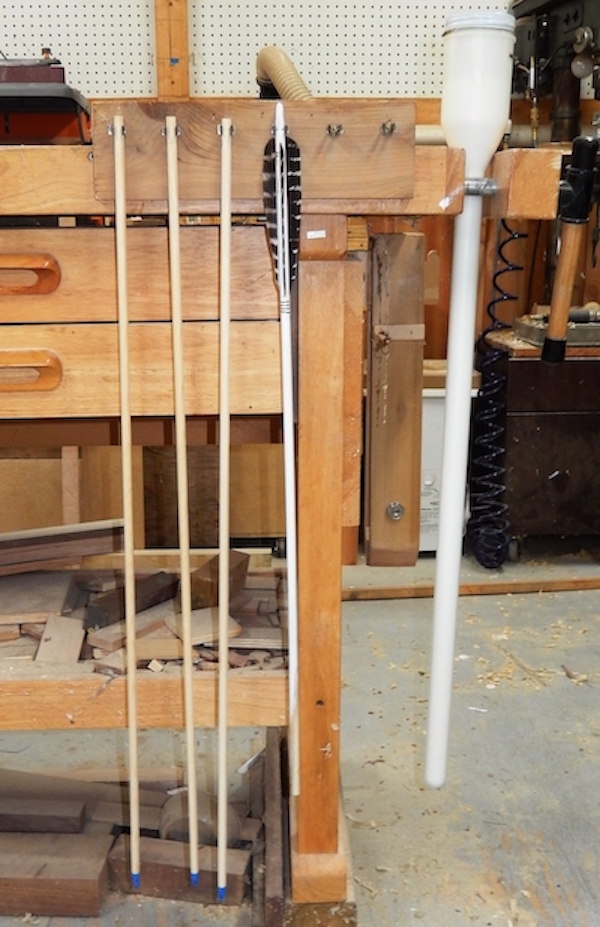This article is reprinted from the Oct/Nov 2018 issue, Skin a Cat column. Tell us your favorite hunting arrow in the poll and the end of the article.
Wood
Although no one knows exactly how long bows and arrows have been part of human culture, their use as weapons and hunting tools has been recorded for over 10,000 years, by primitive warriors and hunter-gatherers on every continent except Australia. For the overwhelming majority of that time span, they have launched arrows made of wood or other natural fibers. Aluminum arrow shafts appeared commercially in the 1930s, carbon shafts in the late 1990s. Both modern options have become very popular among bowhunters, and the next two contributors to this column will explain why. Others stick faithfully to wood arrows for a variety of reasons, and I’m one of them.
I’ll begin my defense of wood with a simple question: Why abandon a practice that has withstood the test of time for thousands of years? Enthusiasts of aluminum and carbon will cite a number of possible reasons, including greater consistency and less variation from shaft to shaft, improved aerodynamics, increased ratio of weight to diameter, and ease of increasing FOC, a relatively new but enthusiastically embraced concept in arrow design.
To which I would respond: “So what?” I’m a bowhunter, not a tournament archer (and I acknowledge that those considerations may be more important to those aiming at 10-rings). I’m shooting at large animals’ chests at twenty-five yards or less for the most part, with arrows that I’ve already proven capable of straight flight in practice. I see no need to worry about a degree of refinement I just don’t need.
As a scientist myself, I know that I should have more respect for the Ashby data that have had such impact on bowhunting arrow design recently. It’s not that I’m skeptical—far from it. But after firsthand experience with hundreds of big game bow kills (my own and others’), I have total confidence in the ability of my wood arrows to kill things dead as long as I put them in the right place. If it ain’t broke, I see no reason to fix it. The one situation in which I recognized a need to modify my arrows (when I was hunting Asiatic buffalo in Australia), I used Brazilian walnut to produce 1200-grain arrows that functioned perfectly.
My conclusion is that the practical considerations regarding choice of shaft material are pretty much a wash, at least for most bowhunting purposes. That leaves me free to choose wood for a host of subjective reasons focused on tradition. These are the arrows that our predecessors shot. Wooden arrows look right in a quiver and sound right leaving a traditional bow. The odor of cedar shavings smells like hunting season when I’m tapering shafts in my shop. Such reasoning is more romantic than scientific, but so is traditional bowhunting.
Like many wood shaft enthusiasts, I’ve experimented with many varieties of wood over the years, including Douglas fir, Sitka spruce, and birch in addition to those dense buffalo killing logs from Brazil. I always keep coming back to Port Orford cedar despite its declining availability, because of its true, island-free grain and resistance to warpage as well as its smell. Its only drawback is low density, but after sending it through animals the size of moose, eland, and brown bears I’ve stopped worrying about it. Experience is still a great teacher.
It is certainly not my intention here to turn this column into an “I’m more traditional than you” debate. We’ll hear from bowhunters who make different choices, and I respect them. But I’m also sure that I’ll keep shooting wood.
Don Thomas
Aluminum
Metal didn’t make good bows, but it proved superior for arrow shafts.
The tent was easy to carry but tighter than a culvert under a dirt road. I slept little. About three in the morning, rocks rolled. Elk—just above me. Listening to elk eat is slow entertainment. As thin light gave form to the peaks, I slid from the bag and down to thicker trees, where I dressed and strung the Howatt. On hands and knees, I climbed back. Dawn lagged. A bull whistled.
There was still plenty of longitude in front of sunrise when my arrow sped into the chill. The elk, black against almost-black rock, crashed away. I heard no clatter of metal – only, seconds later, a cough.
That bull fell to a Zwickey broadhead and a 2219 Gamegetter shaft. So did other elk when, living on the hem of the Wallowas, I had quick access to them. When the Autumn Orange XX75 arrived, I dismissed it as too costly. I’m barely accurate enough to justify spine-matched arrows, let alone upscale aluminum.
Doug Easton began making arrows in 1922, but aluminum shafts didn’t figure into his shooting until ’39, five years after Wisconsin gave the U.S. its first archery deer season. A trademark for his alloy missiles would come in 1946. Back then, you could buy a dozen matched, footed cedar arrows for $12!
The world convulsed in the 1940s, then began a slow recovery. Manufacturers looking to serve international markets and trim production costs latched onto the metal tube. In 1948 Remington’s Models 721 and 722 big game rifles featured tubular receivers that greatly reduced machining time and expense. Hunters could get a 722 for $74.95 – and scope it with a new Leupold Plainsman, fashioned not with a steel tube, but an aluminum housing that kept finished weight to 6 ¼ ounces!
Archers didn’t save money with aluminum. As a youngster, I pawed through cedar arrows at the local hardware to find the straightest. It cost twenty-five cents. But aluminum was more uniform, and suitable for heavy hunting bows. A shaft’s four-digit number, I learned, denoted its diameter and wall thickness. A 2216 arrow had a diameter of 22/64 inch, wall thickness of .016 inch. Increase one and decrease the other, and you get little change—though an incremental jump in diameter has slightly greater effect than does a similar hike in wall thickness (a 2216 is a bit stiffer than a 2117). Size designation has nothing to do with the alloy. Gamegetters I used years ago were of 2024 alloy, tensile strength 86,000 PSI. Easton’s XX75 is of 7075, tensile limit 96,000 PSI. The XX75 was once hailed as “the best-selling hunting arrow shaft of all time.” It may still be, but carbon shafts are hugely popular. They’re lighter for a given spine, so faster.
Were cost not an issue, and I never sent arrows into deep grass or smashed them into rocks, I’d pick Port Orford shafts over aluminum. There’s scant romance in metal pipe! The scent of cedar seduces me. Ditto the natural beauty of a clear-lacquered, crisply crested shaft with long, barred fletching. Alas, wood isn’t straight. Aluminum shafts not only emerge straight but perfectly matched in spine and weight. Aluminum lops neatly with a pipe-cutter. Threaded inserts make head-switching easy. Aluminum arrows won’t shatter on release, as can wood and carbon if you fail to spot incipient splits. While carbon’s speed delivers flat flight, aluminum’s greater weight can drive broadheads deeper into tough game. (Combining aluminum with carbon has sold expensive arrows lately. But as I said, I’m not worth boutique missiles.)
Aluminum arrows pair up nicely with any backstop you’ll use in practice. Pulling them from my “Block” target in the yard is easier than pulling carbon. A colleague reminds me too that alloy buried in grass turns up quickly with a metal detector. Now, that I’ve yet to find appealing. Much of my fascination with traditional archery harkens to my youth. I’m oddly nostalgic recalling many hours on hands and knees, parting grass, feeling for a buried 25-cent arrow.
Wayne van Zwoll
Carbon
When I first took up archery, aluminum arrows were king. I can still remember the first set of Autumn Orange XX75s I bought. I can also remember my grandfather teaching me how to fix them on the straightener he and his friend Duke Parker invented in the early 1950s. Aluminum arrows were tough, and pretty much everyone I knew used them until the early 1990s when carbon came on the scene.
Those early carbon arrows had a pultruded design, which meant all the fibers ran the length of the shaft. They were light and flew extremely fast. But they were about as durable as the toothpicks they resembled, and once broken they shattered into a mass of sharp splinters. Even working with them always seemed to result in my pulling little pieces of them out of my hands.
Thankfully, today’s carbon arrows are nothing like those of the past. The ones made today are almost exclusively manufactured with a cross weave design, meaning they are much more durable than before. If they happen to break, they do so without all their predecessors’ dangerous splinters. They are made in weights from light to very heavy, and spines from extremely weak to dang near rebar stiff.
Over the years I’ve successfully hunted with wood, aluminum, and carbon arrows. These days I hunt almost exclusively with carbon for two simple reasons: durability and simplicity. Good quality carbon arrows are either straight or broken; they flex, but do not take a set. I never have to worry about whether or not I bent my arrows when I accidentally drop my bow (or trip and fall on it).
I am not terribly gentle on my bowhunting equipment. As much as I love the look of wood arrows and feel nostalgia for aluminum, I have found a certain enjoyment in knowing that my carbon arrows will withstand the abuse I place on them. At the end of the day, I view arrows as merely tools and choose what I feel are the best ones for my needs.
You’ll notice I didn’t mention shooting carbon arrows because they “recover from paradox” (stop oscillating) immediately upon leaving the bow or that changing tip weights doesn’t affect their tune. There’s a reason for that. Once we step outside the world of traditional archery Internet message boards, there is more than enough evidence to disprove those myths.
Lastly, it’s important to note that not all carbon arrows are created equal. I’m not here to promote or decry any particular manufacturers, so I will simply advise people to do their own research before buying. A well matched, properly made set of carbon arrows is a pleasure to shoot. A poorly matched one will lead to a lot of frustration. So, if you’ve never tried a good set of carbon arrows, pick some up and give them chance. You may be pleasantly surprised.
Jason R. Wesbrock







Leave A Comment